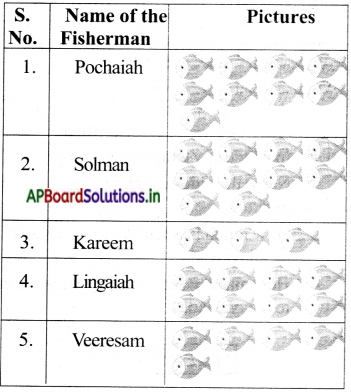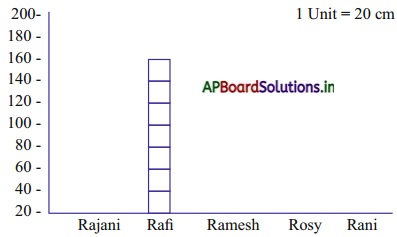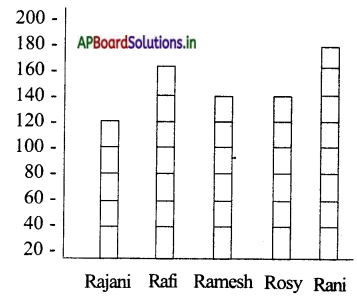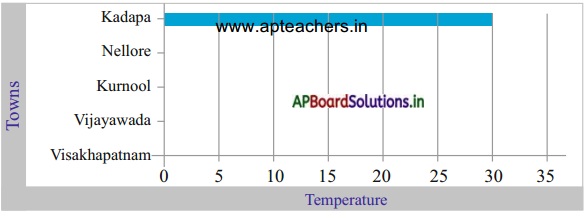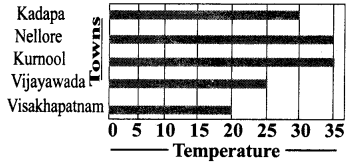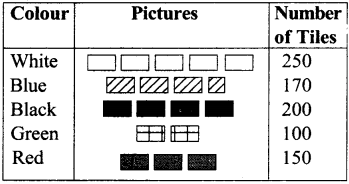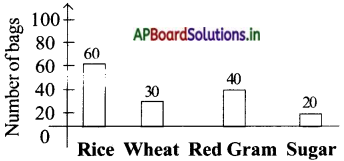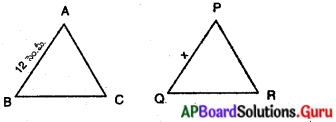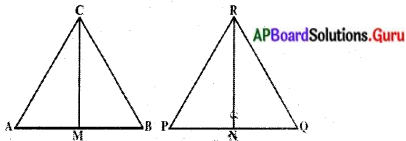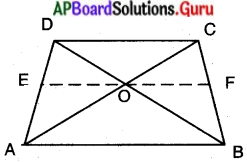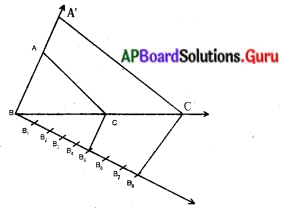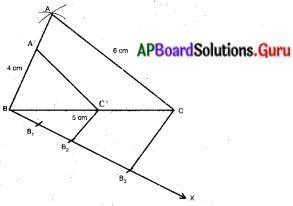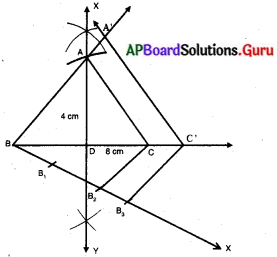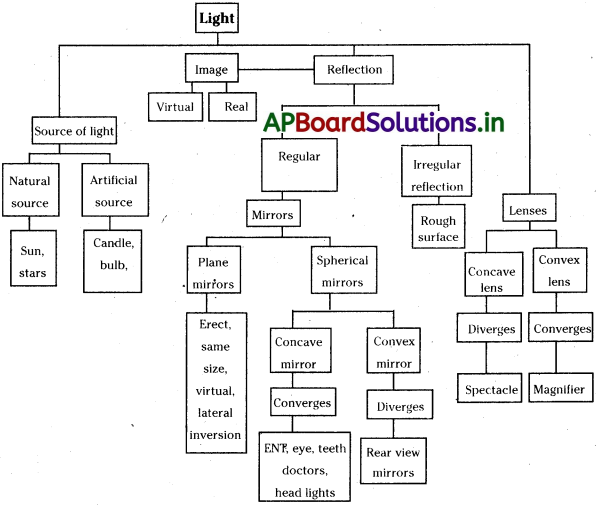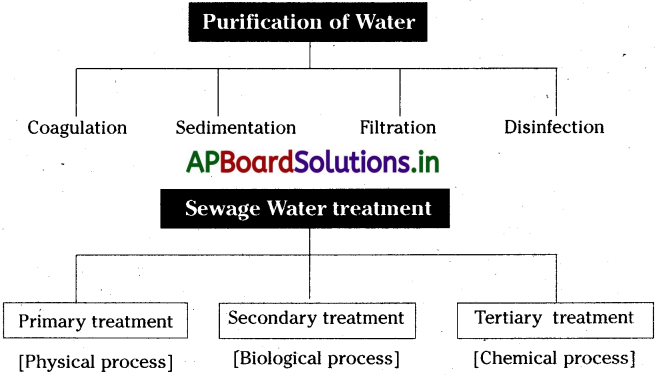Andhra Pradesh AP Board 5th Class Maths Solutions 2nd Lesson My Number World Textbook Exercise Questions and Answers.
AP State Syllabus 5th Class Maths Solutions Chapter 2 My Number World
Rekha and Harsha are studying 5th class. Their class teacher asked them to collect the information of population of their Village/ward, Mandal and District from their Village/Ward Secretary. They went to the village panchayat and collected the information. (TextBook Page No.26)

i. What is the population of Katarupalli village?
Answer:
The population of Katarupalli village = 3,391.
ii. What is the population of Gandlapenta mandal?
Answer:
The population ofGandlapcnta mandai = 24,118.
iii. Can any one say the population of Anantapuram district?
Answer:
The population of Ananthapuram district = 40,83,315
3,0,000 is read as 3 lakhs
4,0,000 is read as 4 lakhs
5,0,000 is read as 5 lakhs
6,0,000 is read as 6 lakhs
7,0,000 is read as 7 lakhs
8,0,000 is read as 8 lakhs
9,0,000 is read as 9 lakhs 4,50,000 read as Four lakhs fifty thousand
7,49,192 read as Seven lakhs Forty nine thousand one hunderd ninety two.

Do these: (TextBook Page No.14)
Question 1.
Read the number 3,51,645 and 9,38,715.
Answer:
3,51,645 – Three lakhs fiftyone thousand six hundred and forty five
9,38,715 – Nine lakhs thirty eight thou¬sand seven hundred and fifteen.
Question 2.
Write any five 6-digit numbers and read.
Answer:
i) 6,89,412 – Six lakhs eightynine thousand four hundred and twelve
ii) 7,98,521 – Seven lakhs ninety eight thousand five hundred and twenty one
iii) 8,89,215 – Eight lakhs eighty nine thousand two hundred and fifteen
iv) 5,98,536 – Five lakhs ninety eight thousand five hundred and thirty six
v) 4,63,748 – Four lakhs sixty three thousand seven hundred and forty eight.
Question 3.
It is the smallest 7-digit number and read as ten lakh.
20,00,000 read as ____________
Answer:
Twenty lakhs
30,00,000 read as ____________
Answer:
Thirty lakhs
40,00,000 read as ____________
Answer:
Forty lakhs
50,00,000 read as ____________
Answer:
Fifty lakhs
60,00,000 read as ____________
Answer:
Sixty lakhs
70,00,000 read as ____________
Answer:
Seventy lakhs.

Do these : (TextBook Page No.14)
Question 1.
Read the numbers 65,14,852 and 29,36,429
Answer:
65,14,852 – Sixty five lakhs fourteen thousand eight hundred and fifty two
29,36,429 – Twenty nine lakhs thirty six thousand four hundred and twenty nine.
Question 2.
Write any five 7-digit numbers and read.
Answer:
i) 76,23,652 – Seventy six lakhs twenty three thousand six hundred and fifty two
ii) 87,63,723 – Eighty seven lakhs sixty three thousand seven hundred and twenty three
iii) 95,76,842 – Ninty five lakhs seventy six thousand eight hundred and forty two
iv) 57,64,965 – Fifty seven lakks sixty four thou¬sand nine hundred and sixty five
v) 43,76,872 – Forty three lakhs seventy six thousand eight hundred and seventy two
Do these: (TextBook Page No.14)
Question 1.
Read the numbers 65,14,852 and 29, 36,429.
Answer:
65,14,852 – Sixty five lakhs fourteen thousand eight hundred and fifty two
29,36,429 – Twenty nine Iakhs thirty six thousand four hundred and twenty nine.
Question 2.
Write any five 7-digit numbers and read.
Answer:
i) 76,23,652 – Seventy six lakhs twenty three thousand six hundred and fiftytwo
ii) 87,63,723 – Eighty seven lakhs sixty three thousand seven hundred and twenty three
iii) 95,76,842 – Ninty five lakhs seventy six thousand eight hundred and forty two
iv) 57,Answer:,965 – Fifty seven lakhs sixty four thousand nine hundred and sixty five
v) 43,76,872 – Forty three lakhs seventy six thousand eight hundred and seventy two

Exercise 1:
Question 1.
Write the following numbers in words.
Answer: 1,25,602
Answer:
One lakh twenty five thousand six hundred and two.
b) 4,50,536
Answer:
Four lakh fifty thousand five hundred and thirty six.
c) 80,00,005
Answer:
Eighty lakhs and five.
d) 5,58,942
Answer:
Five lakhs fifty eight thousand nine hundred and forty two
e) 95,75,240
Answer:
Ninety five lakhs seventy five thousand two hundred and forty.
Question 2.
Write in number for the following.
Answer: Five lakh, twenty four thousand, three hundred and ninety six
Answer:
5,24,396
b) Fourteen lakh, thirty five thousand and fifteen
Answer:
14,35,015
c) Seventy four lakh, sixty two thousand, four hundred and sixty five
Answer:
74,62,465

Question 3.
Read the following and answer.
Vemanna bought a house for ₹ 45,87,000 and a plot beside it, at ₹ 18,56,000. He paid a total amount of ₹ 64,43,000.

Answer:
The cost of house (in words): ₹ Forty five lakhs eighty seven thousand
The cost of the plot (in words): ₹ Eighteen lakhs fifty six thousand
The total cost of house and plot is (in words): ₹ Sixty four lakhs forty three thousands.
Do these : (TextBook Page No.18)
Question 1.
Write the following numerals in standard form and also write in words.
a) 721594
Answer:
Standard form = 7,21,594
Seven lakhs, twenty one thousend, five hundred and ninrty four.
b) 4632584
Answer:
Standard form = 46,32,584
Forty Six lakhs, thirty two thousand, five hundred and eighty four.
c) 73156324
Answer:
Standard form = 7,31,56,324
Seven Crores, thirty one lakhs, fifty six thousend, three hundred and twenty four.
d) 407523436
Answer:
Standard form = 40,75,23,436
Forty Crores, Senventy five lakhs, twenty three thousend, four hundred and thirty six.

Question 2.
Express the following numbers in expanded form.
a) 7,34,254
Answer:
700000 + 30000 + 4000 + 200 + 50 + 4
b) 42,63,456
Answer:
4000000 + 200000 + 60000 + 3000 + 400 + 50 + 6
c) 40,63,52,456
Answer:
400000000 + 0000000 + 6000000 + 300000 + 50000 + 2000 +400 + 50 + 6
d) 73,45,46,800
Answer:
700000000 + 30000000 + 4000000 + 500000 + 40000 + 6000 + 800 + 00 + 0
b. Write the standard form, expanded form and number name for the number represented on spike-abacus.
(TextBook Page No.19)
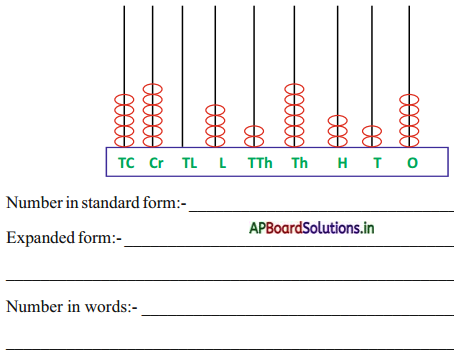
Answer:
Number in standard form: 56,04,26,325
Expanded form :
50,00,00,000 + 1,00,00,000+ 00,00,000 + 4,00,000 + 20,000 + 6,000 + 300 + 20 + 5
Number in words :
Fifty six crores four lakhs twenty six thousand three hundred and twenty five.
Do these : (TextBook Page No.19)
Question 1.
Draw the spike-abacus for the follow-ing numbers in your notebook.
1. 54,56,705
Answer:
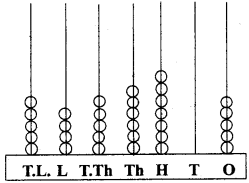
2. 6,27,00,045
Answer:
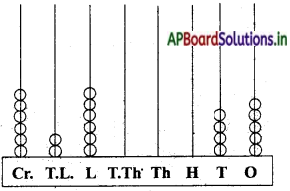
3. 72,61,50,305
Answer:


Question 2.
Write the numerals in standard form for the following number names.
a) Twenty five lakh five thousand eight hundred and forty one.
Answer:
25,05,841
b) Fivecrore twenty la kh six thousand two hundred and five.
Answer:
5,20,06,206
c) Ninety one crore sixty seven lakh thirty five thousand eight hundred and forty two. .
Answer:
91,67,35,842
Question 3.
Write the numerals in standard form for the following expanded forms.
Answer:
60,00,000 + 0 + 50,000 + 1,000 + 0 + 0 + 8 = ________
Answer:
60,51,008
b) 70,00,00,000 + 30,000 + 5,000 + 400 + 3 = ________
Ans:
70,00,30,543
c) 20,00,00,000 + 80,00,000 + 40,000 + 500 + 1 = ________
Answer:
20,80,40,501.

Exercise 2:
Question 1.
Write the following numerals in stan¬dard form using commas in Hindu- Arabic system.
1. 24536192
Answer:
Standard form of24536192 = 2,45,36,192
2. 512483427
Answer:
Standard form of 512483427 = 51,24,83,427
3. 205030401
Answer:
Standard form of 205030401 = 20,50,30,401
4. 900000100
Answer:
Standard form of 900000100 = 90,00,00,100
Question 2.
Write the following numerals in words.
1. 7,29,47,542
Answer:
Seven Crores twenty nine lakhs forty seven thousands five hundred and forty two.
2. 93,53,26,491
Answer:
Ninty three crores fifty three lakhs twenty six thousand four hundred and ninety one
3. 70,30,10,400
Answer:
Seventy crores thirty lakhs ten thousand four hundreds.
4. 30,00,02,000
Answer:
Thirty crores two thousands.

Question 3.
Write expanded form for the following numerals.
1. 3,49,85,294
Answer:
3,00,00,000 + 40,00,000 + 9,00,000 + 80,000 + 5,000 + 200 + 40 + 9
2. 72,47,27,144
Answer:
70,00,00,000 + 2,00,00,000 + 40,00,000 + 7,00,000 + 20,000 + 7,000 + 100 + 40 + 4
3. 50,23,80,050
Answer:
50,00,00,000 + 20,00,000 + 3,00,000 + 80,000 + 50
4. 90,07,00,020
Answer:
90,00,00,000 + 7,00,000 + 20.
Question 4.
Write the number in standard for the following.
a) Forty five lakh thrity three thou-sand six hundred and eighty four.
Answer:
45,33,684
b) Twenty five core seventy thousand five hundred.
Answer:
25,00,70,500
c) 5 crore + 2 ten lakh + 9 lakh + 4 ten thusand + 2 thousand + one hundred + 2 ten + 8 ones
Answer:
5,29,42,128
d) 9 ten crore + 7 crore + 8 ten lakh + 5 ten thousand + 4 hundred + 1 one
Answer:
97,80,50,041
e) 20,00,00,000 + 4,00,00,000 + 50,00,000 + 3,00,000 + 40,000 + 5,000 + 300 + 70 + 9
Answer:
24,53,45,379
f) 80,00,00,000 + 5,000 + 3
Answer:
80,00,05,003

Question 5.
Read the following and answer the questions.
The female population of UttarPradesh state is 9,49,85,062 and the male population is 10,45,96,415 according to 2011 census, and the total population is 19,95,81,477.
a) Write number – name of the female population of UttarPradesh state.
Answer:
Female population : Nine crores forty nine lakhs eighty five thousand and sixty two.
b) Write expanded form of the male population of UttarPradesh state.
Answer:
Male Population: 10,00,00,000 + 40,00,000 + 5,00,000 + 90,000 + 6,000 + 400 + 10 + 5
c) Write number-name and expanded forms of the total population of the state.
Answer:
Male population: Ninteen crores ninty five lakhs eighty one thousand four hun¬dred and seventy seven.
b) The distance between Sun to our planet Earth is fourteen crore, ninety five lakh, ninety seven thousand, eight hundred and seventy kilo-meters.
Write the above number-name form as standard form and also write in expanded form.
Answer:
Standard form: 14,95,97,870
Expanded form:
10,00,00,000 + 4,00,00,000 + 90,00,000 + 5,00,000 + 90,000 + 7,000 + 800 + 70
Do this : (TextBook Page No.22)
Write place, place-value and facevalue of the digit underlined in the following numbers.
a) 43,84,304
Answer:
Place = Lakhs,
Place-value = 3,00,000
Face-value = 3
b) 43,67,245
Answer:
Place = ten thousand
Place-value = 60,000
Face-value = 6
c) 68,98,23,052
Answer:
Place = Ten lakhs,
Place-value = 90,00,000
Face-value = 9
d) 47,63,05,100
Answer:
Place = Ten crores
Place-value = 40,00,00,000
Face-value = 4

Do these : (TextBook Page No.23)
Question 1.
Write greatest and smallest 7-digit numbers using the digits 4,0,3,6,2, 5 and 9 without repeating.
Answer:
Given digits 4, 0, 3, 6, 2, 5 and 9
Greatest number = 9654320
Smallest number = 2034569
Question 2.
Write greatest and smallest 6-digit numbers using digits 4,1,0 and 3 by allowing any digit, any times repeat but use each digit at least once.
Answer:
Given digits 4, 1, 0 and 3
Smallest number = 100344
Greatest number = 443310
Do these (TextBook Page No.50):
Question 1.
Compare the following numbers using the symbols < or > in the blanks.
1. 48,34,635 ____ 2,84,00,000
Answer:
<
2. 9,63,84,312 ____ 9,24,94,989
Answer:
>
3. 42,35,68,943 ____ 42,35,19,045
Answer:
>
4. 25,25,25,252 ____ 25,25,25,525
Answer:
<
Question 2.
Arrange the following numbers in ascending and descending orders.
2345678, 607810542, 694317, 84120079, 498900351, 902347016.
Answer:
Ascending Order:
694317 < 2345678 < 84120079 < 498900351 < 607810542 < 902347016.
Descending Order:
902347016 > 607810542 > 498900351 > 84120079 > 2345678 > 694317.

Exercise 3:
Question 1.
Workout the following.
a) Write place, place-value and face- value for the underlined digits in the following numbers in Indian system.
1) 73,58,942
Answer:
Place: ten thousand
Place value: 50,000
Face value: 5
2) 40,73,35,536
Answer:
Place: ten thousand Place value: 30,000 Face value: 3
3) 82,45,63,125
Answer: Place: Lakhs
Place value: 5,00,000
Face value: 5
4) 64,63,98,524
Answer:
Place : Ten crores
Place value: 60,00,00,000
Face value: 6
b) Which digit can be filled in the blank given in the number (47,_5,63,251) whose place-value is 90,00,000 ?
Answer:
47,95,63,251
c) Find five numbers such that the digit in tens place, lakhs place and ten crores place, is 3 and remaining places have the same digit.
Answer:
i) 30,03,00,030
ii) 31,13,11,131
iii) 32,23,11,232
iv) 34,43,44,434
v) 35,53,55,535

d) I am a 9 digit number. My ten crores place digit is two more than the digit in my hundreds place and the digit in my thousands place is 5 more than the digit in my hundreds place. If 3 is in my hundreds place and in remaining places are
1. Express my name in number form.
Answer:
Required numbers = 5 1,1 1,1 6, 3 1 1
Question 2.
Do the following problems.
1. Form the greatest and the smallest 5-digit numbers using the digits 8,3,9,2 and 5 without repeating.
Answer:
Given digits 8,3,9,2 and 5
Greatest number = 98,532
Smallest number = 23,589
2. Form the greatest and the smallest 6-digit numbers using the digits 4, 5, 8,7, 2 and 6 without repeating.
Answer:
Given digits 4,5, 8,7,2 and 6
Greatest number. = 876542
Smallest number = 245678
3. Form the smallest and the greatest 8-digit numbers using the digits 1, 5, 3, 8, 6,4, 7 and 2 without repeating.
Answer:
Given digits 1, 5, 3, 8, 6, 4, 7 and 2
Greatest number = 87654321
Smallest number = 12345678
4. Form the greatest and the smallest 7-digit number using the digits 5, 0, 8, 4, 3 and 7 (by repeating any one digit but use all digits at least once).
Answer:
Given digits 5, 0, 8, 4, 3 and 7
Greatest number = 8875430
Smallest number = 3004578
5. Form the greatest and the smallest 6-digit even numbers using 5, 0, 2 and 1 (allowing any digit two times but use each digit at least once).
Answer:
Given digits 5,0,2 and 1
Greatest number = 552210
Smallest numebr =100152

Question 3.
Compare the following numbers using > or < = in the blanks.
1. 878393790 _____ 82980758
Answer:
>
2. 792849758 _____ 46758490
Answer:
>
3. 90020403 _____ 400953400
Answer:
<
4. 58694658 _____ 45100857
Answer:
>
Question 4.
Arrange the following sets of numbers in the ascending order.
1. 2828335; 3537286; 1995764; 2989632; 42,86371
Answer:
Ascending Order:
1995764; < 2828335 < 2989632 < 3537286 < 42,86371
2. 1643468735; 102947026; 19385702; 148927131; 109125456
Answer:
Asscending Order:
19385702 < 102947026 < 109125456 < 148927131 < 1643468735
Question 5.
Arrange the following sets of numbers in the descending order.
1. 2003563; 19872003; 279868; 20016930
Answer:
Descending Order:
20016930 > 19872003 > 2003563 > 279868
2. 748932165; 482930456; 69539821; 984326834; 289354124
Answer:
Descending Order:
984326834 > 748932165 > 482930456 > 289354124 > 69539821

Do these : (TextBook Page No.28)
Question 1.
Write the following numerals in standard forms in International system and write the number names.
a) 4753625
Answer:
Standard form of 4753625 = 4,753,625
Four millions seven hundred and fifty three thousands and six hundred twenty five.
b) 700400300
Answer:
Standard form of 700,400,300 = 700,400,300
Seven hundred millions four hundred thousands and three hundred
c) 4250431
Answer:
Standard form of 4250431 = 4,250,431
Four millions two fifty thousands four hundred and thirty one
d) 147235857
Answer:
Standard form of 147235857 = 147,235,857
One forty seven millions two thirty five thousands and eight hundred and fifty seven.
Question 2.
Write the following numerals in the International system.
Answer:
a. Three hundred thousands = _________
Answer:
300,000
b. 5 millions = _________
Answer:
5,000,000
c. Seventy millions = _________
Answer:
70,000,000
d. Four hundred millions = _________
Answer:
400,000,000
Think and Say : (TextBook Page No.29)
From the above discussion, one million is _____ lakhs.
Answer:
10

Exercise 4:
Question 1.
Write the following numerals in standard forms by puting commas, according to International system of numeration.
1. 4528973
Answer:
Standard form of 4528973 = 4,528,973.
2. 53547652
Answer:
Standard form of 53547652 = 53,547,652
3. 901247381
Answer:
Standard form of 901247381 = 901,247,381
4. 200200200
Answer:
Standard form of 200200200 = 200,200,200
Write the number names for the following numbers in International system.
1. 700,000
Answer:
Seven hundred thousands
2. 1,200,000
Answer:
One million two hundred thousands
3. 2,524,000
Answer:
Two millions five hundred and twenty four thousands
4. 7,521,256
Answer:
Seven millions five hundred and twenty one thousands two fifty six
5. 475,562,125
Answer:
Four seventy five millions five hundred and sixty two thousands one twenty five.

Question 2.
Answer the following questions.
1. 1 lakh = ____ thousands.
Answer:
100
2. 1 million = ____ lakhs.
Answer:
10
3. 1 crore = ____ millions
Answer:
10
4. 1 hundred million = ____ crores
Answer:
10
5. 1 million = ____ thousands
Answer:
1000

Question 3.
The distance between sun to our planet Earth is 149597870 kilometres.
Write this number in standard-form and number-name in International system.
Answer:
Distance between Sun to Earth = 149597870 Km
Standard form = 149,597,870
One forty nine millions five ninety seven thousands eight hundred and seventy.
![]()

![]()


![]()
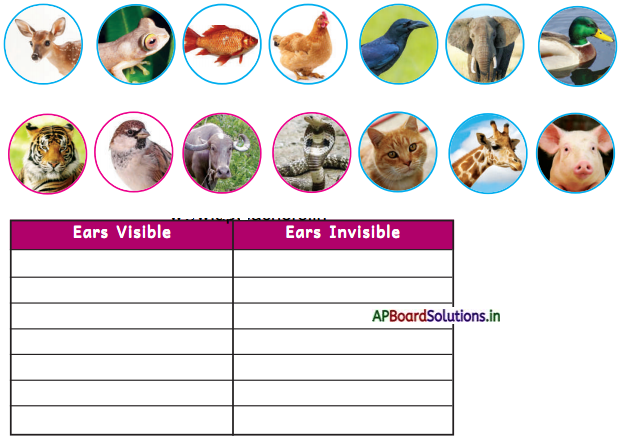
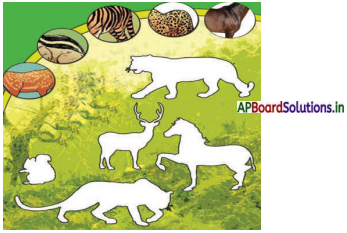
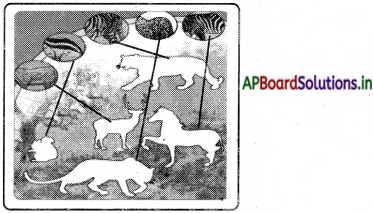
![]()
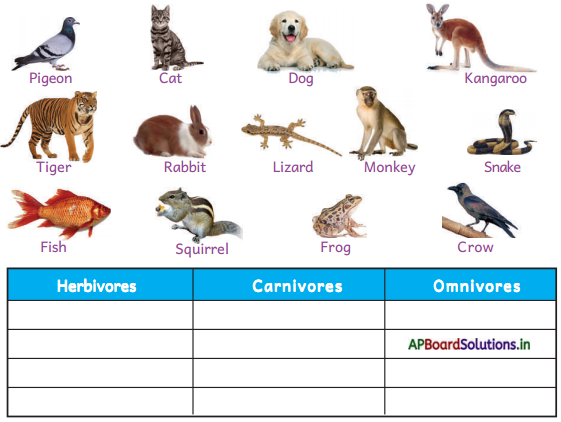
![]()
![]()
![]()
![]()
![]()
![]()
![]()
![]()


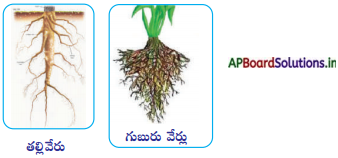






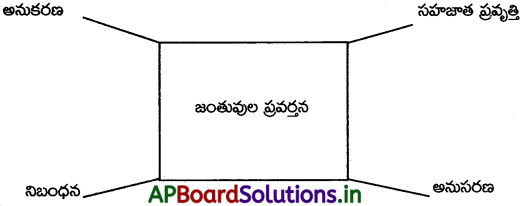


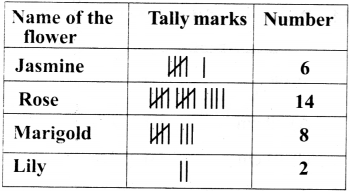
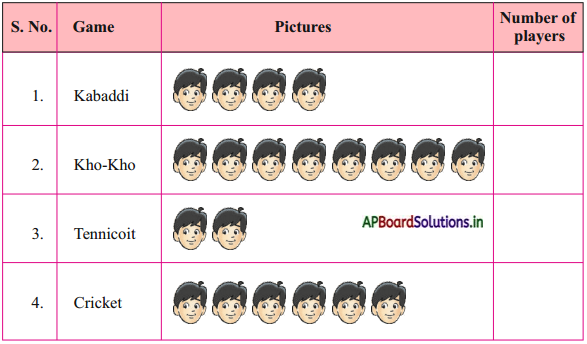


 = 10 i.e., picture of one fish represents 10 fish.
= 10 i.e., picture of one fish represents 10 fish.
